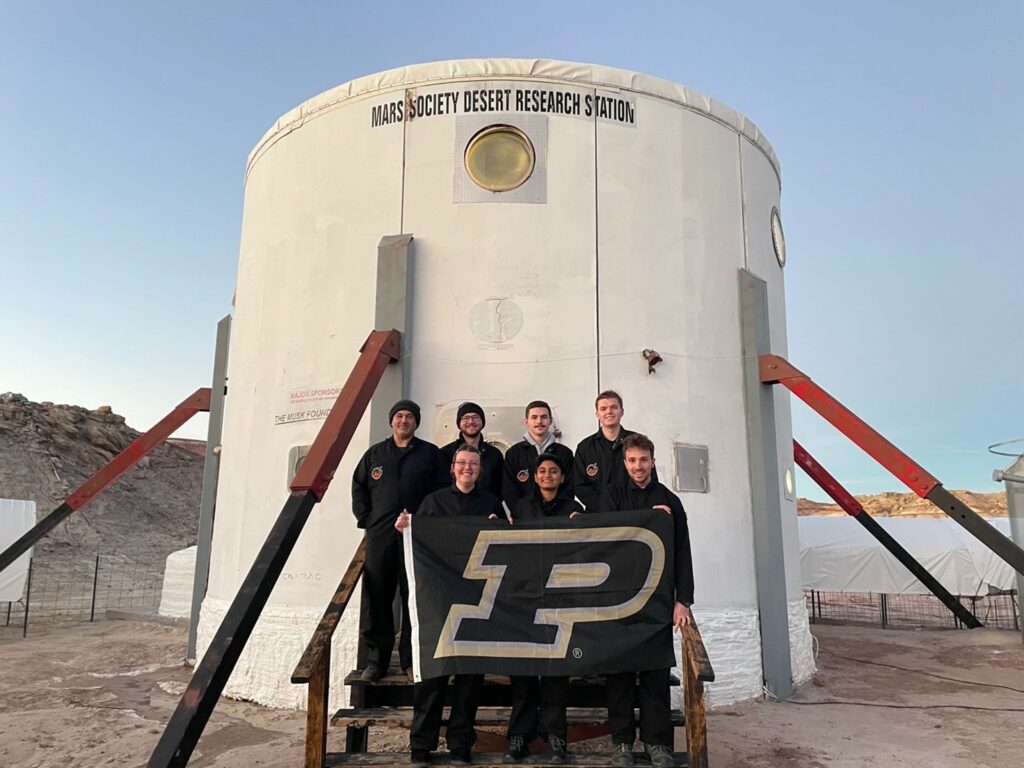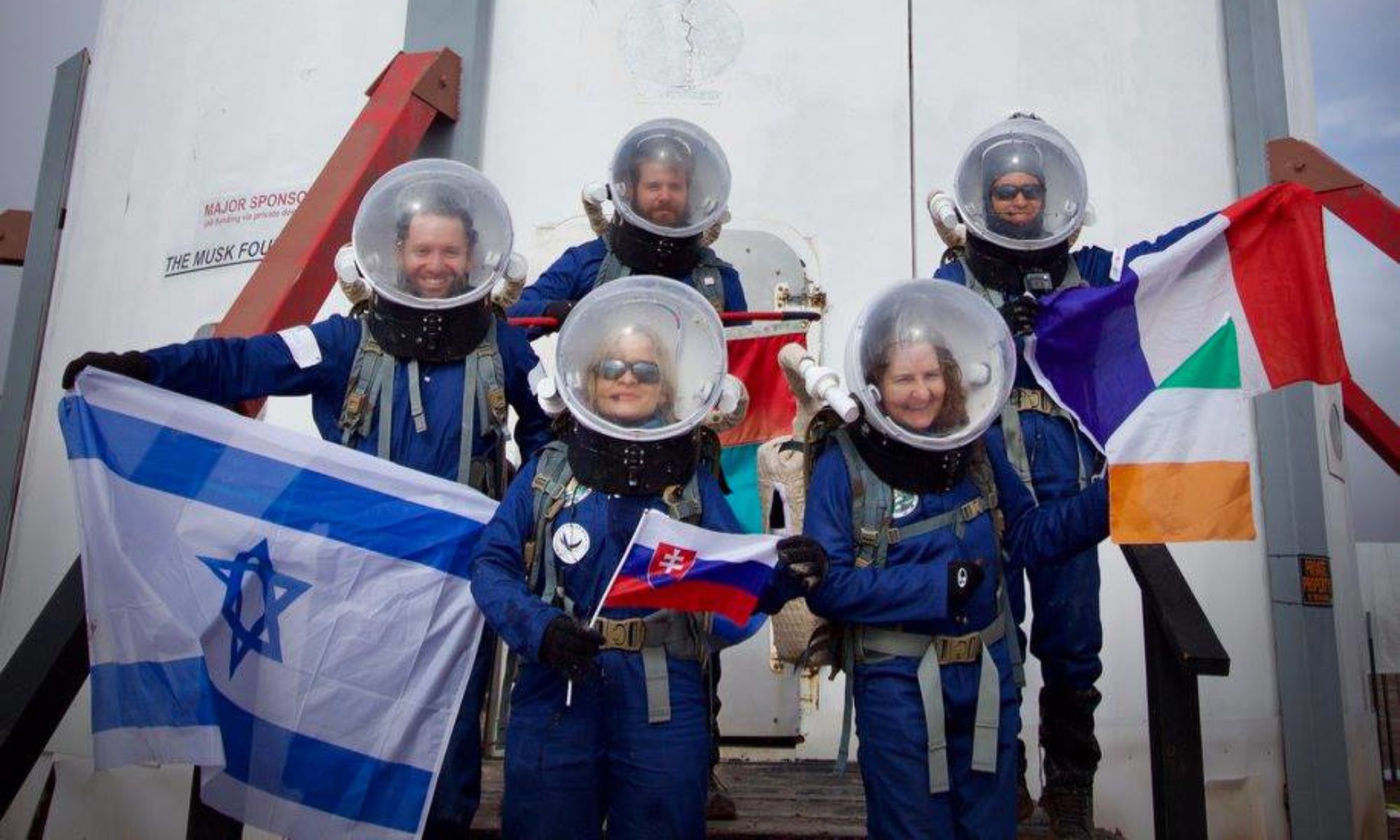Mars Desert Research Station
Mission Summary
Crew 236 – Cradle of Martians
December 19, 2021 – January 1, 2022

Crew Members
Commander: Kasey Hilton
Executive Officer and Health and Safety Officer: Dr. Cesare Guariniello
Crew Scientist: Tyler Nord
GreenHab Officer: Vladimir Zeltsman
Crew Astronomer: Dylan Dilger
Crew Engineer: Pavithra “Pavi” Ravi
Crew Journalist: Benjamin “Ben” Durkee
Acknowledgements
The entire Crew of MDRS 236 would like to express their gratitude to the many people who made this mission possible: our deepest thanks to Dr. Robert Zubrin, President of the Mars Society; Dr. Shannon Rupert, MDRS Director and Program Manager, who managed and supported our mission, and helped us troubleshoot any issues; Atila Meszaros, Assistant Director, who also managed and supported our crew and served as CAPCOM many times during the rotation; Dr. Peter Detterline, Director of Observatories, who trained and assisted our Crew Astronomer before and during the mission; David Murray, GreenHab Manager; Michael Stoltz, The Mars Society Liaison, Media and Public Relations; Scott Davis and NorCal Chapter, responsible for Spacesuits; the amazing and friendly Mission Support CAPCOM who served during our rotation: Bernard Dubb, Andrew Foster, Graeme Frear, Asma Akhter, and MJ Marggraff; Purdue MARS; all the departments and people at Purdue University who supported this mission; Kathy Celestine and Estelle Scott, for writing Christmas cards to the crew; and all the unnamed people, friends, and family, who supported and worked behind the scenes to make this effort possible, and who gave us a chance to be an active part of the effort towards human exploration of Mars.
Mission description and outcome
MDRS 236 “Cradle of Martians” is the fourth all-Purdue crew at MDRS. This mission encountered different challenges, one of the biggest being COVID-19, which delayed the original mission from the 2020-21 field season to the 2021-22 field season. Other challenges included wind and technical malfunctions making EVAs more difficult and non-nominal systems affecting heating and plumbing in the Hab. Even the logistics of the mission preparation was a challenge, with crew members being spread across the United States and even into Europe. However, the crew continuously rolled with the punches and pushed forward with optimistic attitudes. This is what we at crew 236 like to call “making do”. Making do isn’t about merely surviving life on Mars, but using the ups and downs of this Red Planet to revive our spirit of adventure and spontaneity, and to learn and adapt in order to make giant leaps for humankind. As commander, this is what I’m the most proud of my crew for. Their ability and effort to continue living the Martian life with full hearts, smiles on their faces, and a joke or two always up their sleeves. The research and outreach of the crew reflects that attitude. All crew members performed to very high standards and made substantial progress on their research projects and outreach. As described in the rest of this summary, the crew collected useful and interesting data during their time at MDRS and have plans to use the data after the completion of the mission, as well as ideas for laying foundations for further collaboration of Purdue crews with the MDRS program.

Summary of Extra Vehicular Activities (EVA)
After being trained in the use of rovers and in the safety protocols for EVA, the crew had eleven excursions during rotation 236. Two were training EVA to Marble Ritual, 6 more being successful, and another three being shortened or cancelled due to weather or system malfunctions. The EVA served three research projects: scouting additional habitat locations, collection of geological samples, and heat mapping of geological features. The crew optimized the time on the field, limiting the driving time to less than 22% of the entire EVA duration.

Science Summary
Crew 236 had 10 separate projects that covered a range of topics. Four projects were EVA related and all but one desired EVA was completed. These EVA related projects evaluated additional habitat locations, created heat maps of different geological locations, and categorizing geological samples for use on Mars. The indoor projects evaluated the robustness of MDRS, used the observatories to capture pictures of different celestial bodies, optimized the layout of the Hab, and created content for outreach to the general public and school aged children. Overall, each project uniquely highlighted each crewmember’s strengths, and brought light to necessity of bringing humans to the surface of Mars for both scientific and engineering related research and outreach.



You must be logged in to post a comment.